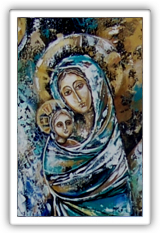|
|
Comprehending Medjugorje : Original Documents And Conversations with Arnaud Dumouch
The Bishop
Reference (French Edition) :
Daria Klanac, Comprendre Medjugorje : Regard historique et théologique, avec la collaboration du théologien Arnaud Dumouch, Informativni centar Mir, Medjugorje, en coédition avec les Éditions Sakramento, Paris, 2012, 2e éd. (1re éd. 2008, ISBN 978-2-915380-19-4 & 978-9958-36017-6), entretien avec le théologien Arnaud Dumouch, pages 139 à 140.
English Translation by Duško Čondić
The Bishop
Daria Klanac : During the first years, the visionaries of Medjugorje had messages for the Bishop of Mostar, Msgr. Pavao Žanić. He was deeply dumbstruck by that fact.[21] What is your analysis of the conflict that left its mark on the relationship between the Bishop and the visionaries?
Arnaud Dumouch : One would have to study the matter precisely, word for word, namely, what belongs to the apparitions, and what is the result of the subjective explanations offered by the youthful visionaries. A study of the words that were recorded at the time leads one to come to the conclusion that we are dealing with the personal explanations of those youths inasmuch as each of them, instead of quoting word for word, simply say: “The Gospa said that…” This places the accent and assumes the form that corresponds to their personal reaction. In this manner, those words reveal the character of the visionaries in Medjugorje who are confronted with temptation: this reveals that these young people are simply human and elated; therefore, they are normal for their age. Some observers of the events, expected the visionaries to be indifferent and to have absolute obedience and perfected holiness in the manner of the apparitions to Catherine of Labouré. This is not the canonical standard used to evaluate, (e.g. Joan of Arc). To the contrary, it is interesting to contemplate the development of their temperaments through the course of twenty-eight years. This observation might shed light on another standard of measure, namely, the “Spiritual Fruits” derived.
D. Klanac : In the case of the messages to the Bishop[22] we have the “transmission” of two of the visionaries, namely, Vicka and Ivan, both of whom are very different personalities. How can one discern what comes from the Virgin and what comes from the children?
A. Dumouch : It would seem that the children report that which they understood ad modum recipientis, that is, in their very own words and within the framework of their own temperaments. Therefore, they do not repeat word for word exactly as uttered. It is, in fact, surprising that both responses seem to be completely connected as a subjective explanation of a singular message.
We often see this in a classroom: if, for instance, a teacher speaks warningly over some outrageous incident in school (the expulsion of some student from school, for instance), and if, following the incident, one begins to question the students who witnessed the event, one will see, as based on the temperament of each of those questioned, that some will relate what happened only as it relates to the emotional point of view, while others will relate the event only from the point of view of conciliatory efforts on the part of the teacher.
This example needs to serve as the guideline when attempting to interpret Medjugorje if it should be approved one day: as a difference to Lourdes or Fatima, where the children repeated the message word for word (since they lived in a particular ambient of western civilization wherein the weight was assigned to listening which would be natural, and where one would not always stress the explanation of what was said), in this instance, we would have a free-flowing dialog with children living at the end of the Twentieth Century—a dialog that is far more free and enriched by one’s personal judgement that is expressed much more spontaneously.
21. Ibid. pp. 39-40 [↩]
